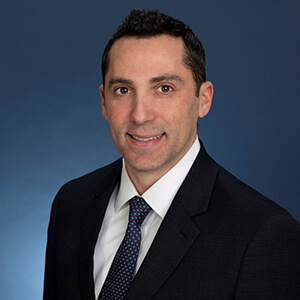Macro risks are mostly transient
U.S. biopharma is beset by macro pressures and policy changes, including trade tariffs, most-favored nation (MFN) pricing, and disruption at the Food and Drug Administration. These factors could cut two ways, Biotech Analyst Brian Abrahams suggested, introducing the biotech M&A panel at RBC Capital Markets’ Global Healthcare Conference 2025.
“On the one hand, you could see uncertainty dissuading more deal flow. On the other, you could see these pressures fueling a greater need for M&A across larger biopharma,” he says.
For Bill Meury, former CEO at Anthos and Karuna, MFN has the potential to hit company valuations, while drug price pressures are here to stay. However, he sees the current FDA instability as “transient” and believes CEOs consider tariffs “fluid and manageable”.
“The pressure to fill pipelines and produce new product flow at the top 10 companies is unforgiving,” he says. “While they are very aware and have a deep understanding of the macro, they are focused on the micro.”
Kevin Lind, former CEO at Longboard Pharmaceuticals, also sees MFN as a key threat, specifically to partnerships outside the U.S.
“If you give up price control in Europe, and MFN in any form comes into play, you are giving up the entire value of the company, because somebody else has different expectations and incentives than you,” he points out.
“If you give up price control in Europe, and MFN in any form comes into play, you are giving up the entire value of the company.”
Kevin Lind, former CEO, Longboard Pharmaceuticals
China shapes the competitive landscape
The panelists hailed the host of new opportunities emerging from China. Pointing out that pharma deployed $6 billion in licensing early-stage Chinese deals, Biotech Analyst Luca Issi predicts: “Maybe there’s going to be a dichotomy, where pharma can buy U.S. companies at a premium, or go and buy cheap assets from China.”
Praveen Tipirneni, former CEO of Morphic Therapeutics, has recently set up a new company and raised series A funding linked to a Chinese asset. He believes the sheer number of compounds emerging from China are generating competition that will change the global landscape for M&A.
“The pharma argument is, ‘if you don’t take this price, there’s three China assets only two years behind’,” he says. “That argument is being used to try to bridge the valuation gap.”
Sujal Shah, former CEO of CymaBay Therapeutics, believes this has implications beyond big pharma. While acknowledging the capital challenges, he says, “Perhaps it needs to become a skillset of smaller companies also to be present and look for additional assets in China.”
“The pharma argument is, ‘if you don’t take this price, there’s three China assets only two years behind’.”
Praveen Tipirneni, former CEO, Morphic Therapeutics
Pharma has a low-risk appetite
The panelists broadly see a risk-averse approach prevailing among potential pharma buyers. Meury observes this is why big deals have been rare, even for large cap pharmas with $30 billion at their disposal. “They’re talking about deals between $1 billion and $5 billion, because those types of deals give you the margin for safety that you need,” he says.
As a result, small biotechs are increasingly pushing novel drug programs on their own behalf. Several of the panelists reached a sale point only after spending years commercializing their own drugs.
“Why do many of us in this room have to champion assets for years and years before there’s strategic interest? It’s because the risk is higher and the pharmas don’t want to take that great risk,” Shah contends. He believes pharma companies now recognize that small firms, given capital, have the capability to launch drugs.
Sharon Mates launched Intra-Cellular Therapeutics in 2002 with neuroscientist Paul Greengard. The company’s drug platform yielded its first approval for the treatment of schizophrenia in 2019. Strength of product enables small companies to compete, even in the face of investor scepticism, she says.
“Strength of voice in the marketplace does translate into DTC and having enough capital, and we did,” she says. While Intra-Cellular was not actively seeking a buyer when Johnson & Johnson made its successful bid, she accepts that the new owner is better placed to extend its product reach globally.
“Why do many of us have to champion assets for years and years before there’s strategic interest? It’s because the risk is higher and the pharmas don’t want to take that great risk.”
Sujal Shah, former CEO, CymaBay Therapeutics
All eyes on the big four
At her company launch, central nervous system (CNS) agents were not sought after, Mates recalls. Recently, however, the field has seen a resurgence: “There is a lot of opportunity in CNS right now, and I think every major company is looking to build on their CNS assets – the same with oncology.”
Besides those two fields, pharma companies are also prioritizing cardiometabolic medicine, as well as inflammation and immunology, Meury notes. “There’s other areas that are very relevant too, but that’s where they’re fishing right now, and those are large, lucrative, structurally-attractive categories,” he says.
“There is a lot of opportunity in CNS right now, and I think every major company is looking to build on their CNS assets – the same with oncology.”
Sharon Mates, former CEO, Intra-Cellular Therapeutics
M&A is bound to revive
The panelists agree that M&A will inevitably bounce back, despite a dip in the first half of the 2020s, which saw $400 billion deployed compared to $550 in the previous five years.
Pointing to the patent cliffs poised to emerge between now and 2030, Meury sees it as a given that M&A will return to historic norms. “The search and evaluation activities at the top 10 companies achieve very high throughput – they are very good at diligence,” he says. “They’re going to do half a dozen to a dozen or more deals each year.”
Lind agrees that pharmaceuticals are obliged to do deals: “They’re going to have to just keep replacing – that’s unless they don’t want to survive.”
Shah says consolidation in pharma has created an opening for smaller companies to take part in mergers. “Certainly our mindset was, if we’re going to be a single-product, commercial company without a real pipeline, we’d better put our egos aside and figure out how to combine with other companies,” he recalls.
“And as you see some of that happen, you’ll see more small, mid-cap size companies – and then the dollars may just get bigger, because you’ll see the bigger checks.”
“The search and evaluation activities at the top 10 companies achieve very high throughput – they are very good at diligence. They’re going to do half a dozen to a dozen or more deals each year.”
Bill Meury, former CEO, Anthos Therapeutics and Karuna Therapeutics





